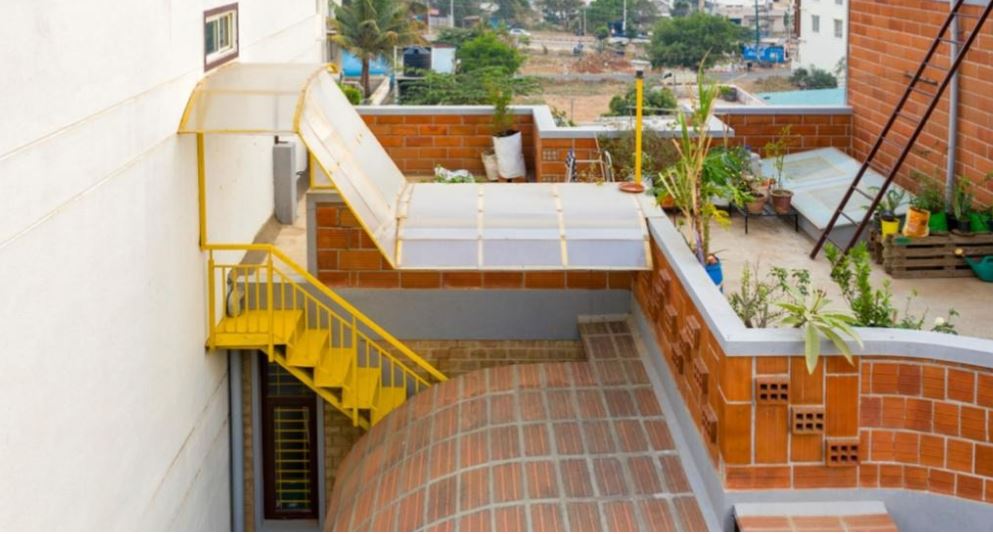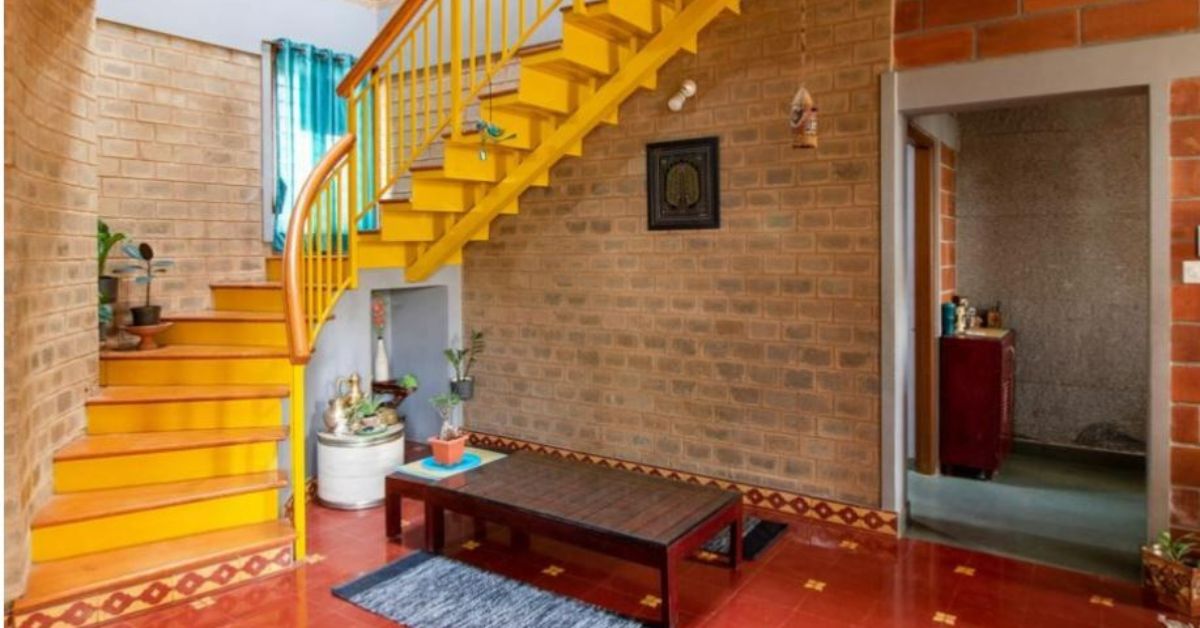A discussion broke out over a Saturday evening chai, which concluded with Satish and Dharitri Shastry, a couple from Bengaluru deciding to build a sustainable house, and let their ‘home breathe’. “As a designer, I wanted authenticity and rawness in my house,” says Satish Shastry, a UX (user experience) and UI (user interface) designer. Agreeing with her husband, Dharitri, a manager at a private company, adds, “I wanted a humble house to live in.”
After going through a few architects, the duo decided to approach A R Sathya Prakash Varanashi, the curator of Sathya consultants, an expert in eco-friendly and cost-effective housing. “Ecological houses should be designed for nature, with nature and of nature. All three approaches have been incorporated to a larger extent in this construction,” says the architect.
Built by skilled labourers and local artisans, this house celebrated its second anniversary in June.

The plans show off the synthesis of curved lines, which are inspired by nature, and straight lines. The construction began with an arch foundation, a rarely opted for but highly cost-effective method. An elegant contrast of local granite stoned stairs and teak wood door enhances the entrance of the house.
The specially ordered Athangudi tiles make up the living room flooring while enhancing the traditional look of the house. The hollow clay blocks used for the exterior walls withstand harsh weather, especially in the scorching summer.
“During summer afternoons, the indoor ambient temperature would be 10 to 12 degrees less than the outdoors,” adds Sathya.
The partition for bedrooms, the kitchen and the toilet is created using stabilised mud blocks, which creates thermal insulation while producing lesser greenhouse gases.
Pinewood and mild steel make up the open riser staircase with an attractive curvilinear profile. The rooms are fitted with tall corner windows, a feature enhancing air and light indoors.
Kota stones, complementing the bright-coloured Athangudi tiles, cover the bedroom floor. A filler slab for the roof, curated with inverted mud pots and hollow clay roofing tiles, brings down the slab weight, construction cost and indoor temperatures. “Overall cost reduction was achieved by the arch foundation, mud blocks, filler blocks, open riser stair, no RCC pillars, hourdi vaulted roof, Athangudi floors, no RCC lintels, stone slabs and oxide floors. The cost was up to 15 per cent less than a conventional house,” says Sathya.
It cost Rs 2500 per sqft, says the architect.
The first-floor balcony with a single stone column and the curved sturdy roof becomes an extension of the family room separated by a door.
Thanks to the way spaces are connected – what the architects call “sequential privacy” — the kitchen and bedrooms are not visible as soon as one enters. Every square foot of the 2200 sq ft house is a bold example of an eco-friendly and cost-effective structure.
An effort to make the household self-sufficient was made by installing solar panels and a rainwater harvesting system alongside a terrace garden. The fruits and vegetables are nurtured using manure from the home compost bin they’ve set up.
From papayas, mangoes, oranges to chillies, this garden makes its way to the family’s dishes. Alongside the garden, one can encounter a workspace/yoga room on the terrace, which is a red oxide floor, keeping the space cool while Bangalore’s heat rises every other day.
Mangalore tiles, while adding up to the aesthetics, are low maintenance. These are also water and fire-resistant, keeping in mind Bengaluru’s monsoons. The cera stones that cover the parking and the terrace floor are durable and resist daily wear and tear, making it the perfect choice. These stones also floor the bathrooms in this house. Authentic and durable stone wash basins are paired with the bathrooms to make them more attractive.
Playing around with hollow clay blocks has made the façade interesting. About 95 per cent of the structure is unpainted and left exposed to the outside, and in those places where a little paint had to be used, the family chose zero VOC (volatile organic compound) paint to reduce the carbon footprint.
By reducing the dependency on resources it is at least 45 per cent cheaper as compared to concrete houses.
The duo is thrilled to step ahead and raise awareness among people about the worsening situation of this planet by this construction. This eco-friendly house, they say, has added a feather to their eco-friendly living.
Written by Vidisha Mohare, a student of Architecture; Edited by Yoshita Rao; All photos credit: Vaishali Bhatia
If you found our stories insightful, informative, or even just enjoyable, we invite you to consider making a voluntary payment to support the work we do at The Better India. Your contribution helps us continue producing quality content that educates, inspires, and drives positive change.
Choose one of the payment options below for your contribution-
By paying for the stories you value, you directly contribute to sustaining our efforts focused on making a difference in the world. Together, let's ensure that impactful stories continue to be told and shared, enriching lives and communities alike.
Thank you for your support. Here are some frequently asked questions you might find helpful to know why you are contributing?

